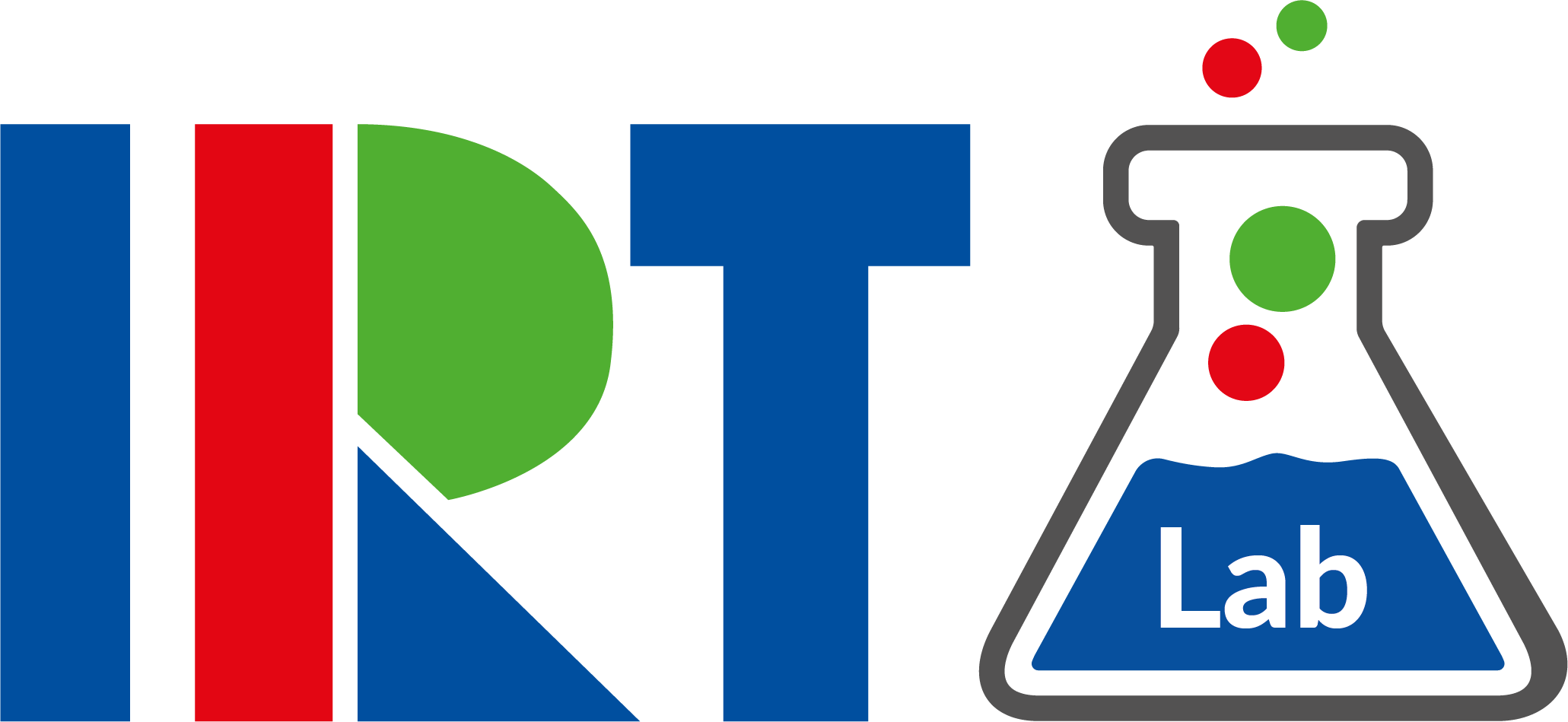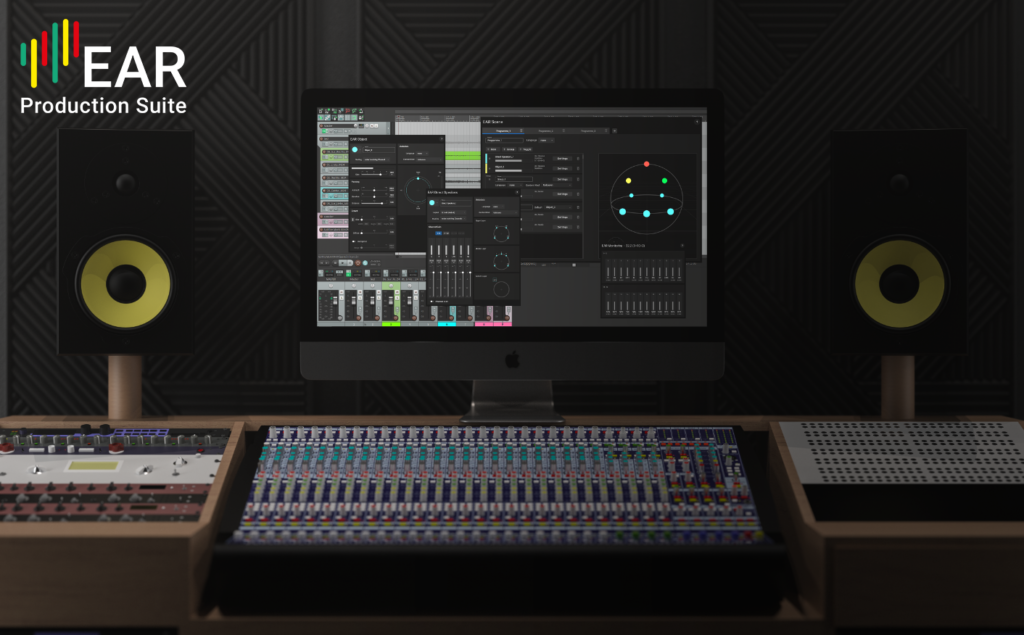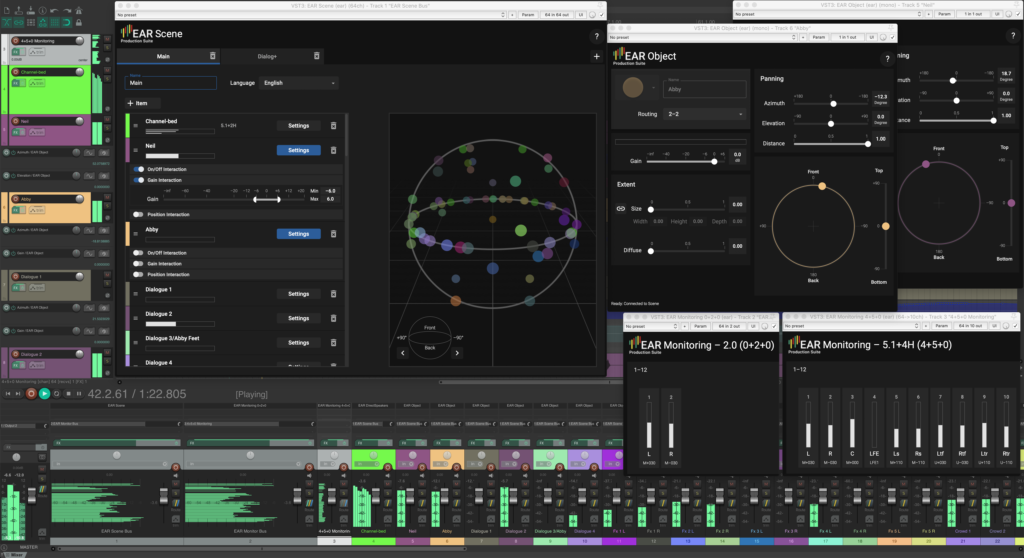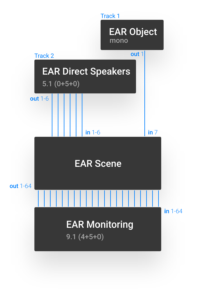We are very proud to inform you about the first public release of the “EAR Production Suite”, a free set of tools for producing immersive and personalizable audio content independently from the distribution codec. This open-source project has been developed in (yet) another great collaboration with our colleagues from the BBC R&D audio team under EBU’s Audio System group umbrella. At the last IBC in 2019, we demonstrated our software for the first time to other professionals, see also our initial blog post. But now, pretty much exactly one year later, we are ready to introduce it to everyone.
Currently available production tools for personalizable and immersive productions are in general tied to one of the new audio codecs for Next Generation Audio (AC-4, MPEG-H and DTS:X) with a limited and codec-specific range of features. The EAR Production Suite has been developed to ease the adoption of Next Generation Audio (NGA) in broadcast productions and to demonstrate the potential of the Audio Definition Model format. The open-source project supports the Audio Definition Model (ADM) natively, with a set of VST® plugins for digital audio workstations (DAWs) to monitor programme content on any ITU-R BS.2051 loudspeaker configuration, be it Stereo or even 22.2, using the ITU ADM Renderer (ITU-R BS.2127). Moreover, the EAR Production Suite enables professionals to import and export ADM files, compliant with the EBU ADM Production profile (Tech 3392). The VST® plugins are currently optimized for the REAPER DAW, which features an extension interface that is used to import and export ADM files within a BW64 container. REAPER’s maximum bus size is 64, so this is currently the number of elements which can be used with the plugins. However, it’s been reported to us that the plugins are working with other DAWs but of course without support for ADM import and export and presumably with a different bus size.
The Suite is using a number of C++ open-source libraries from IRT and BBC for ADM reading/writing from and to the BW64 file format and to render metadata and audio signals compliant to the ITU standard.
A number of VST® plugins are currently available in the EAR Production Suite: “EAR Object”, “EAR DirectSpeakers”, “EAR Scene”, “EAR Monitor” and “ADM Export Source”. The screenshot above shows a them in an example REAPER session.
The EAR Object is – as the name says – intended for audio objects and should be used to adjust position, extent, diffuse and other parameters. The EAR DirectSpeakers should be used for traditional channel-based signals such as Stereo, 5.1 or even 22.2 setups.
Both types of input plugins are always connected to an EAR Scene plugin, where the metadata is collected and several global settings such as programme language, interactivity settings and audio programmes may be applied. The EAR Scene is then connected with one or more EAR monitor plugins which is then rendering the metadata and the audio signals from the connected REAPER tracks for a specific loudspeaker configuration, be it 0+2+0 (aka Stereo) or 9+10+3 (aka 22.2).
A detailed guide how to install and use the EAR Production Suite can be found on the project webpage and here.
For broadcasters, it is crucial to maintain interoperability and reproducibility. The only way to properly enable this is by establishing open standards. We are working in standardization bodies such as the ITU, AES, SMPTE, and ETSI to develop the necessary open standards and facilitate the adoption of NGA by the media industry. To ensure interoperability in NGA workflows, it is important to specify a common standard for the metadata that is used to describe the audio. Hence, we pushed hard for the development of the Audio Definition Model (ADM), defined in ITU-R BS.2076, and other related standards around that because it is the only existing codec-agnostic format for Next Generation Audio.
This great project combines many things at which we worked on in the last years to foster the introduction of Next Generation Audio in the media industry. Be it our work on standards in the ITU and EBU, the implementation of these standards in open-source libraries or the publication of ADM guidelines. All of this is now published in a neat bundle and we are very much looking forward to your feedback.




